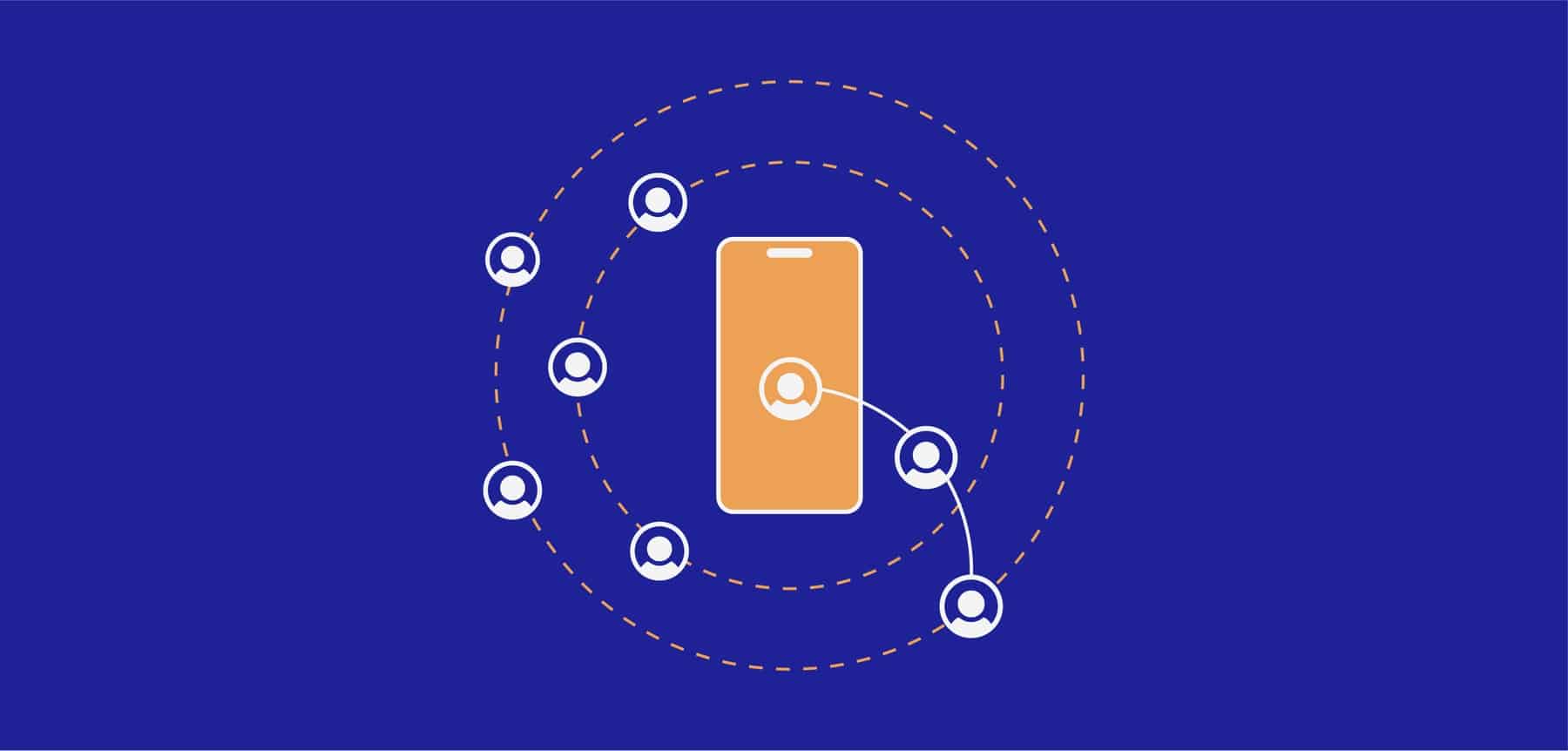Funnel Analytics: The Key to Improving Your Conversion Rates
- Reading Time: 9 minutes
Funnel analytics tracks user progression through a conversion path, pinpointing drop-off points for optimization and better conversions.
What are funnel analytics?
As a business owner, you know that optimizing your conversion rates is key to success. But how do you know which steps in your funnel are working and which ones aren’t? That’s where funnel analytics comes in. Funnel analytics is the process of tracking and analyzing customer behavior as they move through your funnel. By understanding the customer journey, you can identify areas for improvement and optimize your conversion rates. Analyzing the digital channels of each application, measuring the success and following their performance is essential for gaining guidance and insight.
In this blog post, we will cover the complete details you need to know about funnel analytics, from establishing your conversion funnel to diagnosing conversion issues and strategies for optimization. We will also discuss how funnel analytics fits into your overall business strategy and provide tips on continuously improving your funnel analytics. With these insights, you’ll be able to improve your conversion rates and drive more business success.
How does funnel analytics fit in with the overall business strategy?
By understanding your target audience’s digital journey and optimizing conversion funnels, funnel analytics helps align marketing efforts, optimize user experience, and boost overall business objectives. It enables you to measure the success of marketing strategies, identify the right questions at each stage of the funnel, and maximize revenue and customer retention.
Funnel analytics for high conversion rates for a better end-user experience
Tracking and analyzing the different stages of a customer journey is an essential aspect of funnel analytics. This process allows businesses to optimize conversion rates by identifying bottlenecks and drop-offs within the funnel. By analyzing drop-off points, they can pinpoint areas for improvement and implement A/B testing to optimize page performance.
Additionally, segmentation can be used to target potential customers based on their behavior. Funnel analytics provides actionable insights that are a great starting point for improving conversion rates.
Sign up to drive your business with the power of data
The role of funnel analytics in business success
Funnel analytics plays a crucial role in driving business success. It provides a clear picture of the customer journey, allowing you to understand how users interact with your website or app. By analyzing the strengths and weaknesses of your marketing campaigns, you can make data-driven decisions to increase conversion rates. Funnel analytics also enables you to optimize your marketing funnel for maximum ROI by identifying areas that need improvement. Additionally, it helps you measure the success of your online business, providing actionable insights to improve performance.
Establishing your conversion funnel
To establish your conversion funnel, start by defining the steps from awareness to conversion. Map out your customer journey and identify key touchpoints along the way. Determine the ultimate goal of your conversion funnel and break it down into measurable stages. This will allow you to track user progression through each stage using funnel analytics. By understanding how users move through your flow, you can gain actionable insights to optimize their experience. By using funnel analytics, you can gain a holistic view and make data-driven decisions to boost your conversion rates.
For example, creating a funnel for a credit card application process involves a series of steps. The process starts by encouraging users to click the “Apply Now” button on an attractive landing page and directing them to an informative application form included in your app. In accordance with their requests, applicants receive approval or rejection notifications from the application, while approved individuals continue to activate their cards and complete their account information. To improve conversion rates and user satisfaction, continuous feedback and optimization are crucial at all stages.
Product conversion funnel
To improve the conversion rates of your product, it is essential to analyze user behavior from the homepage to digital registration. By examining how users interact with your website or app, you can identify areas of improvement and optimize the sign-up form to reduce drop-off rates. Removing any roadblocks in the digital registration process is crucial to ensure a smooth user experience.
Additionally, leveraging personalization can enhance the overall user experience and increase conversion rates. Utilizing product analytics provides actionable insights into the effectiveness of your conversion funnel and allows you to make data-driven decisions. By understanding each step of your funnel and utilizing funnel analytics, you can improve the performance of your product and increase conversions.
Marketing conversion funnel
The marketing conversion funnel guides potential customers from initial awareness through engagement and consideration, to the final purchase. It starts with creating awareness through various channels and content, followed by sparking interest with valuable information. The decision stage uses compelling offers to drive purchases, ultimately leading to successful conversions. Analyzing user behavior at each step enables marketers to refine strategies for higher conversion rates and lasting customer relationships.
For example, thanks to products similar to Dataroid, you can set up automatic scenarios based on the digital movements of people who interrupt the flow, so you can reactivate these people.
How to identify your conversion funnel stages
To identify your conversion funnel stages, start by identifying the key steps in your customer journey. Then, map out the exact order of touchpoints in your funnel. Analyze user behavior at each stage to determine funnel progression. Finally, break down your funnel into distinct stages for analysis.
Common pitfalls in setting up conversion funnels
- When setting up conversion funnels, it’s important to be mindful of common pitfalls that can hinder their effectiveness. One common pitfall is overcomplicating the funnel with unnecessary steps. By keeping the funnel simple and streamlined, you can prevent confusion.
- Another pitfall to avoid is ignoring customer drop-off points. It’s essential to identify where customers are dropping off and take steps to address those issues. This could involve improving the user experience, providing better support, or addressing any concerns or objections.
- Tracking the right metrics for each funnel stage is also crucial. By accurately measuring key performance indicators such as conversion rates and engagement metrics with platforms like Dataroid, you can gain valuable insight into the efficiency of your funnel and make data-driven decisions to optimize its performance.
- Proper segmentation and targeting of potential customers is another area where many marketers falter. By understanding your target audience and tailoring your funnel to their specific needs and preferences, you can increase the likelihood of conversions.
- Lastly, not optimizing the funnel based on user behavior and feedback is a missed opportunity. Monitoring user behavior, collecting feedback, and making iterative improvements based on these insights can lead to a more effective and successful funnel.
By avoiding these common pitfalls and focusing on continuous optimization, you can ensure that your conversion funnels are set up for success.
Key metrics used in funnel analytics
When it comes to funnel analytics, there are several key metrics that can provide valuable insights into the performance of your conversion funnel. One important metric is the conversion rate, which measures the percentage of users who successfully complete a desired action. With Dataroid’s funnel and user path model, it is possible to catch the drop-off one in the funnel, examine the user path of that audience and check whether it has uninstalled.
Another metric to consider is the average order value, which measures the average purchase value per customer. Additionally, calculating the customers lifetime value can give you a clear understanding of the total value a customer brings over their lifespan.
Finally, evaluating the funnel abandonment rate can help you identify the percentage of users who drop off at each stage. By closely monitoring these key metrics, you can gain actionable insights that will help you optimize your conversion funnel and improve your overall conversion rates.
The value of funnel tracking tools and platforms
Funnel tracking tools and platforms are indispensable for businesses, offering insights into sales and marketing performance. They analyze metrics like conversion rates, bounce rates, and traffic sources to identify strengths and weaknesses. For example, Dataroid Funnels can help you understand where customers leave on their journey or improve conversion rates. It is possible to see a customer’s entire journey with Funnels, from applying for a loan to buying a ticket. By identifying customers who leave, you can make groups of those who leave, and then improve your service.
Strategies for funnel optimization
To optimize your conversion funnel, there are several strategies you can implement. First, focus on optimizing your landing page to increase engagement and reduce bounce rates. By creating a visually appealing and user-friendly page, you can encourage visitors to stay and explore further.
Secondly, personalized messaging and targeted content play a crucial role in guiding users through the funnel. Tailor your communication to address their specific needs and pain points, providing valuable information at each step of their journey.
Lastly, continuously monitor and analyze your funnel data to identify areas for optimization.
Improving top-of-the-funnel engagement
Top-of-the-funnel (TOFU) engagement is the initial interactions and activities potential customers have with a brand, marking the beginning of the customer journey and creating awareness through actions like website visits, social media clicks, or newsletter sign-ups.
To improve top-of-the-funnel engagement, it’s essential to create compelling and informative content that attracts and engages your target audience. By offering valuable information or resources, you can capture the attention of potential customers and encourage them to move further down the conversion funnel. Additionally, optimizing your homepage and navigation is crucial in providing a seamless user experience. A well-designed and intuitive website and mobile app layout can make it easier for users to explore your site and find the information they need. Lastly, implementing data-driven strategies allows you to increase the number of users entering the top of your funnel.
Enhancing middle-of-the-funnel conversions
Middle-of-the-funnel (MOFU) conversions are significant actions or milestones that show potential customers are moving closer to making a purchase or a substantial commitment with a brand, like downloading a product guide or requesting a demo.
To enhance middle-of-the-funnel conversions, it’s important to provide valuable content and resources that address common pain points or objections. By offering free trials, coupons or demos, you can encourage users to experience your product or service firsthand. Additionally, utilizing analytics can help identify roadblocks or drop-offs in the middle of your funnel, allowing you to make data-driven improvements. By understanding where users may be hesitating or encountering obstacles, you can optimize your funnel steps and create a more seamless journey. This actionable insight can lead to higher conversion rates and a greater overall impact on your business. Remember, enhancing middle-of-the-funnel conversions is a crucial step in maximizing your sales and reaching your business goals.
Increasing bottom-of-the-funnel conversions
Bottom-of-the-funnel (BOFU) conversions are the critical actions that signal a potential customer is ready to make a purchase or take a significant action, such as completing a purchase or signing a contract.
To increase bottom-of-the-funnel conversions, it is crucial to provide clear and compelling calls-to-action at the end of the funnel. With in-app messages or push notifications, you can encourage users to take action by guiding them to the next step and highlighting the value they will gain. Additionally, simplifying the purchasing process and removing any unnecessary steps or distractions can help streamline the user experience and reduce friction. By implementing these strategies, you can enhance your bottom-of-the-funnel conversions and drive more successful outcomes.
Frequently asked questions about funnel optimization
How long does It take to see results from funnel optimization?
How often should i review my funnel analytics?
Can funnel analytics help in reducing customer churn?
How to use funnel analytics for better customer segmentation
Conclusion
In conclusion, funnel analytics is a powerful tool that can significantly improve your conversion rates and drive business success. By understanding the different stages of your conversion funnel and identifying areas for optimization, you can enhance engagement, increase conversions, and ultimately achieve your business goals. Regularly reviewing and updating your funnel analytics, leveraging user experience, and monitoring key performance indicators are essential strategies for continuous improvement.
If you need assistance with implementing funnel analytics to your product development process, get in touch with Dataroid team. Together, we can unlock the full potential of your business and maximize your conversion rates.
Sign up to drive your business with the power of data

YOU MAY ALSO LIKE
Drive your digital growth
Schedule a demo today to learn more on how we can help you unleash the potential of digital using Dataroid.





